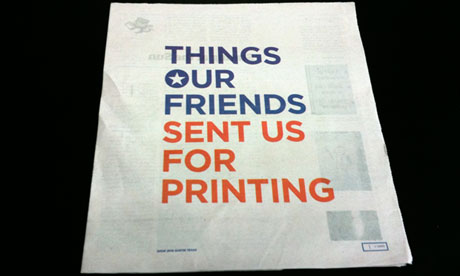
Robin Sloan, author of Fish, the acclaimed iPhone essay featured here a few months ago, used the term "flip-flop" to define an increasingly common process by which a work of art moves between different formats, and specifically between the physical and the digital. As an example, he gave the digitisation of a marble statue by a museum, its storage and restoration, and its physical recreation by a 3D printer – a process not too far off in many of the world's major institutions. The flip-flop also comes in very handy when we're trying to take advantage of the different functions of print and digital, reading and writing.
The Evernote Smart Notebook from Moleskine allows fans of the classic notebooks to save copies of the pages to Evernote's online suite of organisation tools. A special page design helps a smartphone camera capture sketches and handwritten notes as if they were digital documents. Brightly coloured bookmark stickers which turn into tags online can be added to pages, syncing the digital and physical versions.
It's also becoming easier to print the best of the web in order to digest it away from the computer or phone. Many of these tools are built upon existing digital collation services such as Instapaper and Readability, which allow you to save and read online articles when disconnected from the web. But these queues of reading, just like unread books on the bedside table, can stack up quickly.
Newspaper Club, a British startup using the downtime on large news presses, allows anyone to design their own short-run newspaper in tabloid and broadsheet formats. Its trial run in 2008, "Things Our Friends Have Written on the Internet", repurposed blog posts for newsprint, while its later Telepaper experiment customised Readability articles. And a new service, Blackstrap, promises to produce beautifully laid-out books from your Instapaper stack. As the range of forms available to read grows, the format in which that reading is done – online, on portable devices, ebooks, books and newspapers – is ever more up to the reader.

